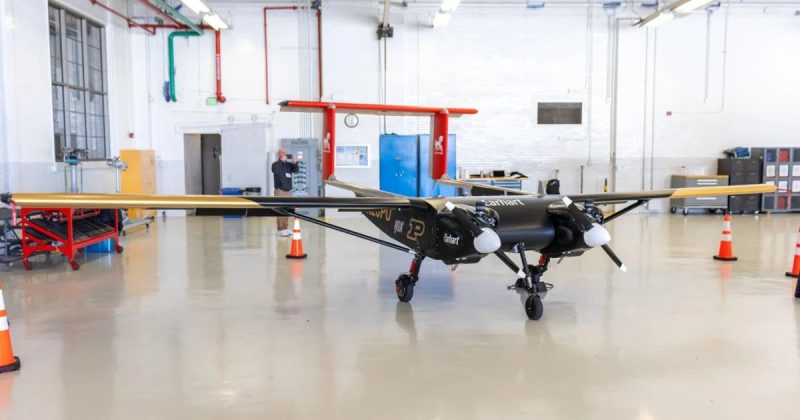The world’s first research center devoted to the development of artificial intelligence (AI) in aviation has been established by Windracers, a pioneer in autonomous air travel, in collaboration with Purdue University. Today’s opening of the Center on AI for Digital, Autonomous and Augmented Aviation (AIDA3) represents a significant advancement in the research and use of unmanned aerial vehicles (UAVs) and related technologies.
Since its founding in 2017, Windracers has significantly contributed to the decrease in the price of providing humanitarian aid by using cutting-edge design and manufacturing techniques. Thanks to its in-house Masterless autopilot system, the company’s ULTRA UAV—which is renowned for its adaptability and ease of maintenance—runs without the need for a remote pilot. The British Antarctic Survey and the Royal Navy are just two of the prominent organizations that have used the UAV, which is designed to operate in harsh environments, to demonstrate its dependability through long-term autonomous flights.
Windracers’ founder and executive chairman, Stephen Wright, revealed his excitement for the new project: “We are incredibly excited to launch this groundbreaking AI center with Purdue University, a highly respected academic institution whose alumni include the first and most recent humans to step on the moon.” We want to make the aviation industry completely automated and low-cost by taking another enormous step forward,” he said.
In order to improve capabilities ranging from demand analytics to real-time weather prediction, AIDA3 will investigate the applications of artificial intelligence (AI) and machine learning (ML) in autonomous systems. With potential to have a big impact on other industries and commercial logistics, the center aims to increase the scalability and efficiency of self-flying aircraft operations.
Sabine Brunswicker, AIDA3 director and Purdue professor, highlighted the current challenges and the center’s mission: Existing AI/ML models are not sufficiently reliable to close the loop from data to actions in the real-world that is safe, trustworthy, and scalable, she explained. “Currently, it can take 10 people to operate one UAV. It is time for one operator to be able to coordinate 100 UAVs at the same time. Our mission is to go beyond current AI/ML models where the potential benefits of smarter UAVs can be fully realized globally.”
As part of the partnership, Windracers will receive support for research and development in the US market. Two of its ULTRA UAVs will be provided by the company for continuous testing at Purdue University Airport, which is well-known for being Amelia Earhart’s research base. The development of autonomous flight technologies will be aided by these unmanned aerial vehicles (UAVs), named Armstrong and Earhart.
As a component of Purdue University’s Institute for Physical Artificial Intelligence (IPAI), AIDA3 aims to develop novel solutions by fusing artificial intelligence with the physical world.


